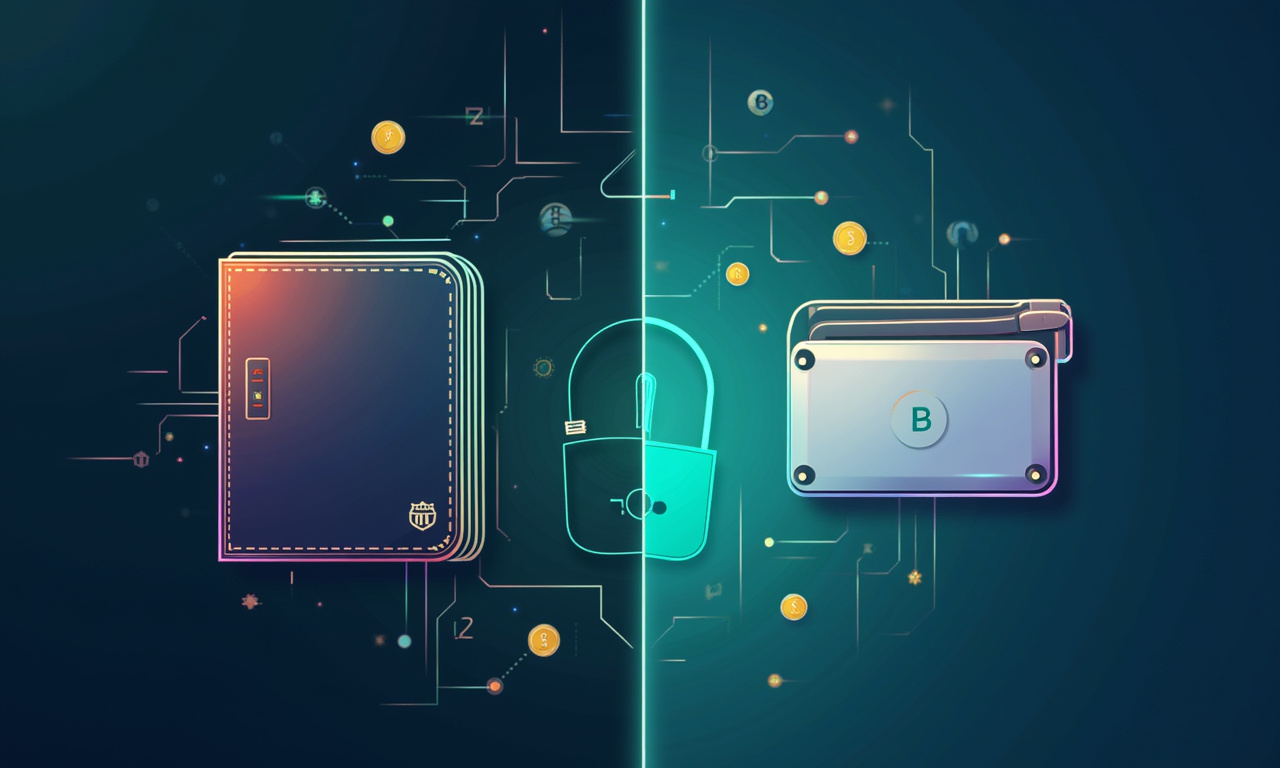Selecting the appropriate hardware wallet has become essential for protecting digital assets. As the cryptocurrency landscape evolves, investors need to stay informed about the latest security measures and features offered by different wallets. For example, in this article we will compare two prominent hardware wallets, D’CENT Wallet vs Trezor. We’ll explore their features, security protocols, pricing options and more, guiding users towards the best choice for their needs in 2025. D’CENT Wallet differentiates itself with a biometric login and multi-device support. In the opposite corner, Trezor is known for their stellar customer support and model variety.
D'CENT Wallet Features and Functionality
D’CENT Wallet offers an advanced yet user-friendly feature set, specially designed to protect and control all your digital assets. The wallet relies on a 24-word seed phrase, which is again the industry standard. This new feature means your recovery will be safe even if your device is lost, stolen or broken. D’CENT Wallet increases your security with biometric login and PIN protection directly on the device. By doing this, nobody besides you, the authorized user with the key, can ever retrieve your wallet.
An advanced security feature of D’CENT Wallet is its support for BIP39-compliant 25th word. This new feature, ochr, adds an additional layer of security to your seed phrase. That prevents someone from accessing your money if they shouldn’t be able to. Another unique feature of D’CENT Wallet is multi-device support, which lets users securely manage their growing assets on any supported device. The D’CENT Card and its biometric features are intended to be used exclusively on mobile devices. This restriction makes them much less useful on other platforms.
Retailing at $139, the D’CENT Biometrics Wallet offers the latest biometrics security features without sacrificing price. For buyers looking for a cheaper alternative, the D’CENT Card Wallet sells for $38. D’CENT Wallet comes with strong security structure. It features a dApp/explorer, letting users engage with decentralized applications right from their wallet. This feature is a convert UX to UX Mozilla, allowing smooth access to the rapidly-growing ecosystem of decentralized services. The integration of biometric and PIN approval mechanisms sets D'CENT Wallet apart, providing a unique and secure way to authorize transactions.
Trezor Wallet Features and Functionality
Trezor is one of the most recognized brands in the hardware wallet space, with a reputation for solid build quality and support. Trezor sells several different models, with each model sporting a different array of features and price ranges. The Trezor Safe 5, the newest model on the market. It features a 1.54″ color screen that provides a crisp and intuitive interface for handling your digital treasures.
The Trezor Model One is a simplified, entry-level model. It has a 0.96-inch monochrome display with 128 x 64 pixel resolution. For better or worse, it’s the Model One’s lack of complexity that gets it noticed. Users have selected it for its security and ease of use as a hardware wallet. Trezor Model One price starts at $49, which makes it a very affordable choice for beginners to introduce themselves to the world of hardware wallets. The Trezor Safe 3, which is intended to be a middle tier option between the Model One and the Safe 5, is priced at $79. The Trezor Safe 5’s next-generation features and full-color display bring a premium to the price, at $169.
One of Trezor’s key strengths is its commitment to customer support, which is evident through their extensive knowledge base and quick response times. Trezor provides 24/7 customer service through online support tickets and various social media channels, ensuring that users can get help whenever they need it. This support is particularly useful and valuable for users who are new to hardware wallets. It provides assistance for people who run into technical challenges on the journey. Combined with Trezor’s longstanding reputation as the industry leader and their vast customer support resources, Trezor is a trusted choice for protecting your digital assets.
Security Comparison
When doing security evaluations of hardware wallets, security needs to be the primary focus. Both D'CENT Wallet and Trezor employ robust security measures to protect users' digital assets. D’CENT Wallet’s biometric login and PIN protection on the hardware device help create an ironclad defense against unwanted access. Along with a 25th word support, which is BIP39 compliant and greatly raises the security level. This new addition greatly increases the difficulty for attackers to successfully acquire your seed phrase.
Trezor adds layers of security to keep digital assets safe. Consequently, Trezor devices generate and store private keys offline, ensuring they can never be compromised by potential online threats. Trezor’s firmware is open source, making it possible for the security community to review it and ensure transparency. This level of transparency ensures that we can work together to identify and mitigate any potential security vulnerabilities.
Both wallets give users the option to back up their seed phrase. This backup feature is indispensable for recovering funds should a device be lost or damaged. We recommend that all users write down a backup of their seed phrase and keep it somewhere safe, ideally offline, and in a fireproof/waterproof safe. Both wallets offer competitive security measures. It requires users to actively practice good security hygiene by maintaining their devices and software in a constant state of up-to-date thereby greatly reducing the chances of being compromised. D’CENT Wallet improves and adds user-specific security through its proprietary biometric + PIN approval process. Conversely, Trezor does not have this particular feature.
User Experience and Interface
User experience is one of the most overlooked aspects when it comes to hardware wallets. It provides users with a seamless, easy-to-navigate solution with its dApp explorer, so users can effortlessly access and engage with decentralized applications. The biometric login and PIN protection features make accessing the wallet incredibly secure yet frictionless. Yet, restricting D’CENT Card and Biometrics functionalities exclusively to mobile devices can be hardly considered as an advantage for all users.
Trezor’s devices, especially the new Safe 5 with its vibrant color display, provide a gorgeous and intuitive user experience. The Trezor Model One, though more basic, offers an equally simple and effective introduction to the world of managing digital assets. Trezor has great customer support resources. In addition to traditional online support ticket systems, they tap into customer service available through social media channels.
Regardless of which wallet you choose, both offer an easy-to-follow setup procedure. They walk users through the process of generating a seed phrase and setting up their device. Users need to read the rules very carefully. If they take the appropriate steps, they can feel confident that their seed phrase will be secure. Ultimately, whether D’CENT Wallet or Trezor is the better option comes down to personal preference and what you’re looking for in a wallet. If you’re looking for advanced security features and seamless dApp integration, D’CENT Wallet is the perfect choice. Conversely, if your main concerns are excellent customer support and access to a larger variety of devices, Trezor is the right choice.
Pricing and Value
For many users, pricing is likely to be the biggest factor in determining which hardware wallet they ultimately purchase. D’CENT Wallet has a couple great options The Biometrics Wallet for $139, or the Card Wallet for $38. The Biometrics Wallet includes the most sophisticated security features, and the Card Wallet is an entry-level design that opens up quality and technology for wider access.
Trezor has multiple models available for different price ranges. Of them, the Trezor Model One is the most affordable option at only $49. The Trezor Safe 3 retails for $79 and the Trezor Safe 5 for $169. The new Trezor Safe 5 arrives with one of the most advanced feature sets available, highlighted by a dazzling new color display. All this high-end technology doesn’t come cheap.
When weighing the utility of each wallet, users will have to take stock of what’s most important to them and their specific use case. If you’re looking for a cryptocurrency wallet that puts security first, look no further than the D’CENT Biometrics Wallet. The Trezor Safe 5 is another great choice. If you’re on a strict budget, we recommend the D’CENT Card Wallet or Trezor Model One. On top of this, users have to plan for the expense of accessories. This takes into account all backup devices and protective cases when they determine the total cost of ownership. A crypto hardware wallet provides the best long-term value by securely storing and managing your digital assets. It provides users with insurance against losses due to hacking or theft.




